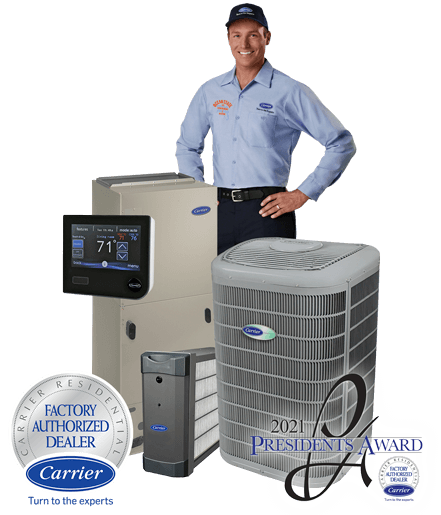Sizing, selecting and installing the right A/C for your Jacksonville home are important decisions that have lasting significance for monthly energy expenditures, home comfort and indoor air quality. A/C efficiency ratings are the first tool to use for A/C replacement or new install. Keep reading to take the guesswork out of your decision.
High Ratings and Low Energy Bills
There are a few things to keep in mind when mulling over a new A/C installation. A/C efficiency ratings should be used to compare long-term operating costs of all systems you’re considering for your home. Higher ratings mean better energy efficiency, and they also tell you what kind of comfort and system performance you may expect. In this comparison, a new A/C with a multi-stage compressor and air handler easily outperforms and offers much greater comfort than a new system without these features.
One of the best tools for selecting the right A/C for your home is a lifetime cost analysis. Your HVAC professional uses A/C efficiency ratings to determine, from day one, how much an A/C investment will cost for purchase, installation, estimated energy bills and maintenance for the life span of the A/C. This is what you can expect to learn:
- You’ll see in black and white your initial investment for selecting a standard or mid-efficiency A/C compared to the investment in a high-efficiency A/C system.
- Going by your past energy usage and estimated energy costs, you’ll see the difference in operating costs between systems. Even though this calculation is based on an estimate on future electricity prices, the savings ratio based on efficiency ratings is a solid number which you can bank on.
- You may also consider the differences in performance between standard and high-efficiency systems, and the potential for fewer repairs with better performing components.
A/C Efficiency Ratings
A/C systems are required to be tested for energy efficiency, and the results made available for consumers. The ratings to watch are seasonal energy efficiency ratio (SEER) and energy efficiency ratio (EER).
- The SEER rating is a ratio of energy efficiency, displayed as a percentage, during the course of the cooling season — a factor of energy input (electricity) and cooling output. The A/C system is placed under controlled environmental conditions of temperature changes to simulate the typical cooling season elements and usage.
- Like SEER, the EER is a factor of energy input and cooling output. However, EER is a steady-state test which provides the A/C efficiency ratings at a given temperature, rather than simulating variable weather changes. EER is the efficiency rating your HVAC professional uses for correctly sizing an A/C system to the home’s cooling load.
Home Efficiency
The next step for installing a new A/C is making sure your home efficiency is up to snuff. The energy-efficiency output of a new A/C system, whether standard, mid or high efficiency, will only be as efficient as the home in which it’s installed. The primary factors affecting A/C efficiency are the air ducts and heat gain/loss of the home’s envelope.
A heat gain/loss calculation of the envelope should be performed by your HVAC professional. A heat gain/loss measurement reveals air leaks in the envelope, and hot/cold spots where insulation is inadequate, absent or damaged.
- A blower door test reveals air leaks and the rate of leakage by depressurizing the home. Air leaks are common around windows, doors and the attic hatch.
- Infrared imaging shows hot/cold spots in the shell. This tool is vital since it is difficult to measure insulation in many parts of existing homes.
A/C Sizing
After the heat gain/loss assessment and home efficiency upgrades, if any are performed, your new A/C is correctly sized. Correct A/C sizing is vital for maximum performance, comfort and savings. Many HVAC contractors still use the rule-of-thumb method for A/C sizing. There are too many parameters required for optimal A/C sizing and home efficiency to simply go by the size of your old A/C or your home’s square footage.
Ductwork Evaluation
The air ducts are the last system evaluated for efficiency and size, though not by any means the least important. An efficient air duct system is equally important to home comfort and low energy bills as the new A/C you select. If current ducts are appropriately sized, they should be tested by the blower door method in order to find and seal air leaks.
To learn more about A/C efficiency ratings and installation in your Jacksonville area home, please contact us at Ocean State Air Conditioning & Heating.
Image Provided by Shutterstock.com





 Offer valid on qualifying systems only. Financing available, subject to credit approval. Must present coupon at time of service. Cannot be combined with any other offer. Contact Ocean State for complete details.
Offer valid on qualifying systems only. Financing available, subject to credit approval. Must present coupon at time of service. Cannot be combined with any other offer. Contact Ocean State for complete details.





